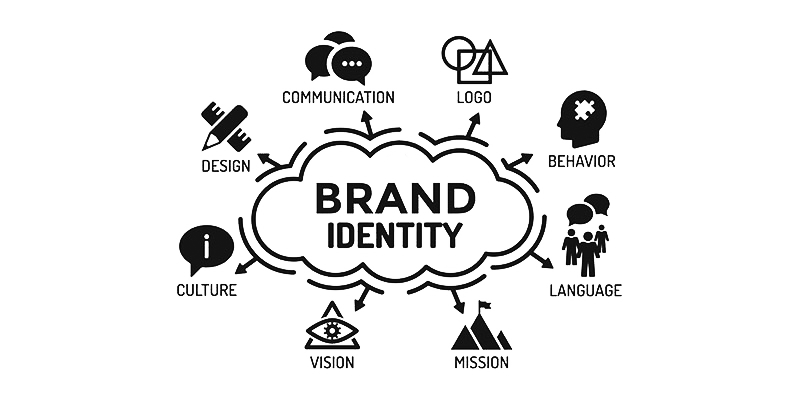What led you into design?
The Importance of a Strong Brand Identity
Introduction
In the competitive business landscape, a strong brand identity is more than just a logo or a catchy slogan. It encompasses the entire essence of a company, influencing how customers perceive and connect with the brand. A robust brand identity not only differentiates a business from its competitors but also fosters trust, loyalty, and a lasting emotional connection with its audience. In this article, we’ll explore why a strong brand identity is crucial for businesses and how it can impact customer perception and loyalty.
Components of a Strong Brand Identity
A strong brand identity is composed of several elements that work together to create a cohesive and memorable impression.
Logo and Visual Elements
The logo is often the first thing people associate with a brand. It should be simple, memorable, and reflective of the brand’s values and personality. Alongside the logo, visual elements like color schemes, typography, and imagery play a significant role in creating a consistent and recognizable brand identity.
Brand Voice and Messaging
The way a brand communicates with its audience is critical. A consistent brand voice, whether formal, friendly, or quirky, helps build a recognizable and relatable personality. Messaging should align with the brand’s core values and resonate with the target audience.
Brand Values and Mission
A brand’s values and mission define its purpose and what it stands for. These elements should be clearly communicated and reflected in all brand activities. When customers understand and align with a brand’s values, it builds deeper connections and loyalty.
Consistency Across Channels
Consistency is key in maintaining a strong brand identity. Whether online or offline, every touchpoint should reflect the same brand personality, values, and messaging. This uniformity strengthens brand recognition and trust.
Building Customer Perception
Customer perception is shaped by every interaction with the brand. A strong brand identity plays a vital role in influencing how customers view and feel about the brand.
First Impressions Matter
First impressions are crucial. A well-designed brand identity ensures that the initial interaction leaves a positive and lasting impression. This can lead to increased interest and engagement from potential customers.
Trust and Credibility
A professional and consistent brand identity conveys trust and credibility. Customers are more likely to choose a brand they perceive as reliable and authoritative.
Emotional Connection
A strong brand identity fosters an emotional connection with the audience. When customers feel emotionally connected to a brand, they are more likely to develop loyalty and advocate for it.
Enhancing Customer Loyalty
Loyal customers are invaluable assets to any business. A strong brand identity helps in building and maintaining customer loyalty.
Brand Loyalty and Repeat Business
Customers who resonate with a brand’s identity are more likely to become repeat buyers. A strong brand identity creates a sense of belonging and loyalty that keeps customers coming back.
Word-of-Mouth Marketing
Loyal customers often become brand advocates, sharing their positive experiences with others. This word-of-mouth marketing is incredibly powerful and can significantly enhance a brand’s reputation.
Customer Retention Strategies
Implementing customer retention strategies that align with the brand identity ensures a consistent and positive customer experience. This can include loyalty programs, personalized communication, and excellent customer service.
Differentiation in the Market
In a crowded market, differentiation is essential. A strong brand identity helps a business stand out and attract the right audience.
Standing Out from Competitors
A unique brand identity distinguishes a business from its competitors. It highlights what makes the brand special and why customers should choose it over others.
Unique Selling Proposition (USP)
A clear USP, communicated through the brand identity, reinforces the brand’s unique benefits and value. This helps attract customers who are specifically looking for what the brand offers.
Competitive Advantage
A strong brand identity can provide a competitive advantage by creating a distinct market position. It makes it easier for customers to recognize and choose the brand over others.
The Role of Storytelling in Brand Identity
Storytelling is a powerful tool in shaping brand identity and connecting with the audience on a deeper level.
Crafting a Compelling Brand Story
A compelling brand story that reflects the brand’s journey, values, and mission can captivate the audience. It adds a human element to the brand, making it more relatable and memorable.
Authenticity and Transparency
Authentic and transparent storytelling builds trust and credibility. Customers appreciate honesty and are more likely to support brands that are open about their practices and values.
Relatability and Engagement
Storytelling that resonates with the audience fosters engagement and relatability. When customers see themselves in the brand’s story, it creates a strong emotional bond.
Impact on Marketing and Advertising
A strong brand identity enhances the effectiveness of marketing and advertising efforts.
Cohesive Marketing Campaigns
Consistent brand identity across all marketing campaigns ensures a unified message. This cohesiveness strengthens brand recognition and recall.
Increased Advertising ROI
A recognizable and trusted brand identity can lead to higher returns on advertising investments. Customers are more likely to respond positively to ads from brands they know and trust.
Brand Recall and Recognition
A strong brand identity improves brand recall and recognition. When customers can easily identify and remember a brand, it increases the likelihood of repeat business and referrals.
Brand Identity and Digital Presence
In today’s digital age, a strong online presence is essential for brand success.
Website and Online Platforms
A well-designed website and consistent online presence reflect the brand’s identity and values. It ensures a positive user experience and builds credibility.
Social Media Consistency
Consistent branding across social media platforms is crucial. It helps in maintaining a cohesive brand image and engaging with the audience effectively.
Online Reviews and Reputation Management
Managing online reviews and reputation is part of maintaining a strong brand identity. Positive reviews and proactive reputation management enhance trust and credibility.
Employee Advocacy and Internal Branding
Employees are vital ambassadors of the brand. Engaging them with the brand identity strengthens internal branding and advocacy.
Engaging Employees with the Brand
Involving employees in the brand’s mission and values fosters a sense of belonging and pride. Engaged employees are more likely to represent the brand positively.
Internal Communication
Effective internal communication ensures that employees are aligned with the brand identity. It helps in maintaining consistency in messaging and actions.
Employee Brand Ambassadors
Encouraging employees to become brand ambassadors amplifies the brand’s reach. Their authentic advocacy can influence potential customers and build trust.
Adapting Brand Identity Over Time
A brand identity must evolve with changing market dynamics while maintaining its core essence.
Evolving with Market Changes**
Adapting the brand identity to reflect market trends and consumer preferences ensures continued relevance and appeal.
Rebranding Strategies
When necessary, rebranding can revitalize a brand’s image. Effective rebranding strategies should retain core values while updating elements to align with current market demands.
Maintaining Core Values
While adapting, it’s crucial to maintain the brand’s core values. These values form the foundation of the brand identity and should remain consistent.
Measuring the Effectiveness of Brand Identity
Assessing the impact of brand identity helps in refining strategies and ensuring continued success.
Brand Awareness Metrics
Tracking brand awareness metrics, such as recognition and recall, provides insights into the brand’s visibility and impact.
Customer Feedback and Surveys
Gathering customer feedback and conducting surveys help in understanding customer perceptions and identifying areas for improvement.
Analyzing Brand Perception
Analyzing how customers perceive the brand through various channels helps in fine-tuning the brand identity and ensuring it resonates with the target audience.
Conclusion
In summary, a strong brand identity is crucial for businesses to build trust, foster loyalty, and stand out in a competitive market. By consistently conveying a clear and compelling brand identity, businesses can create lasting emotional connections with their customers, enhance marketing efforts, and drive long-term success. Investing in a robust brand identity is not just about aesthetics; it’s about creating a meaningful and memorable presence that resonates with the audience.



